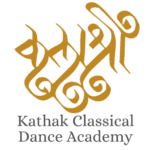Kathak Dance Education as a Source of Spiritual Development
Kathak, one of the major classical dance forms of India, is more than just a performance art; it is a pathway to spiritual development and self-discovery. With its intricate footwork, expressive gestures, and rhythmic compositions, Kathak offers profound benefits that extend beyond the physical and artistic realms. This blog explores how Kathak dance education can serve as a source of spiritual growth and personal transformation. Kathak, which means “to tell a story” in Sanskrit, is a classical dance form originating from Northern India. It evolved from ancient temple dance traditions and was later influenced by Persian and Mughal culture. The dance form is characterized by its graceful movements, complex footwork, and expressive storytelling through hand gestures (mudras) and facial expressions. How Can Kathak Dance Education Be a Pathway to Spiritual Growth? 1. Expressing and Exploring Emotions Kathak provides a unique platform for expressing and exploring emotions. The dance form involves interpreting various emotions through rhythmic movements and gestures. This process helps dancers to confront and understand their feelings, leading to emotional healing and personal growth. By channeling emotions through dance, practitioners can achieve a greater sense of emotional balance and spiritual well-being. 2. Enhancing Self-Awareness and Mindfulness Through Kathak, dancers become more attuned to their bodies and minds. The art form emphasizes body awareness and mindfulness, encouraging practitioners to be present in the moment. This heightened self-awareness is crucial for spiritual development, as it allows individuals to connect more deeply with their inner selves and understand their true nature. 3. Cultivating Discipline and Focus Kathak education requires rigorous practice and dedication. Learning this art form involves mastering complex footwork, intricate patterns, and rhythmic cycles. This discipline fosters mental focus and concentration, which are essential for spiritual growth. By committing to regular practice, dancers learn to cultivate patience and perseverance, qualities that are beneficial for personal development and spiritual awakening. 4. Connecting with Tradition and Culture Kathak education often includes learning about the historical and cultural contexts of the dance form. This connection with tradition helps dancers gain a deeper understanding of their cultural heritage and spiritual roots. Engaging with the stories and myths conveyed through Kathak enhances one’s sense of identity and belonging, fostering spiritual fulfillment and a sense of purpose. What Role Does a Kathak Teacher Play in Spiritual Development? 1. Guiding Spiritual Exploration A skilled Kathak teacher plays a crucial role in guiding students through their spiritual journey. They not only impart technical knowledge but also share insights into the spiritual aspects of Kathak. Teachers often emphasize the importance of meditation, self-reflection, and inner growth, helping students integrate these practices into their dance training. 2. Providing Emotional and Spiritual Support Kathak teachers often serve as mentors and guides, offering emotional and spiritual support to their students. They provide a safe space for dancers to explore their inner selves and address any spiritual or emotional challenges they may face. This supportive relationship enhances the overall learning experience and promotes spiritual development. What Are the Benefits of Integrating Kathak into Daily Life? 1. Promoting Inner Peace and Harmony Regular practice of Kathak can lead to a sense of inner peace and harmony. The rhythmic movements and meditative aspects of the dance form help to calm the mind and reduce stress. This inner tranquility supports spiritual growth and enhances overall well-being. 2. Encouraging Personal Growth and Transformation Kathak education fosters personal growth by challenging individuals to push their boundaries and overcome obstacles. The journey of mastering this art form involves continuous learning and self-improvement, which contributes to personal transformation and spiritual development. 3. Building a Stronger Connection with the Divine For many practitioners, Kathak is a form of devotion and a way to connect with the divine. The dance form’s spiritual narratives and devotional themes offer a means of expressing reverence and devotion. Engaging in Kathak as a spiritual practice helps dancers build a stronger connection with their spiritual beliefs and aspirations. In Conclusion Kathak dance education serves as a powerful tool for spiritual development. Through its focus on discipline, self-awareness, emotional expression, and cultural connection, Kathak offers a holistic approach to personal and spiritual growth. By integrating Kathak into their lives, practitioners can undergo profound transformations, cultivate inner peace, and deepen their connection with their spiritual selves. Engaging with Kathak, especially under the guidance of the best kathak dance teacher in Thane,Mumbai provides a meaningful path to spiritual enlightenment and fulfillment, whether as a dedicated dancer or an enthusiastic student. Share this post if you find it useful – Previous Post More than 2 results are available in the PRO version (This notice is only visible to admin users) Have Questions Unleash the Grace of Kathak Dance! Enroll Now for Inspiring Kathak Dance Classes and Embark on a Journey of Rhythmic Elegance. Call Us Now Kalashri Acadamy of Kathak Kathak
Kathak Dance Education as a Source of Spiritual Development Read More »










